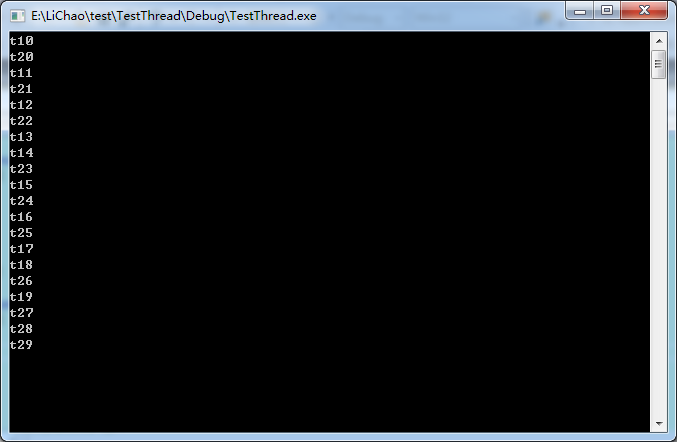C++11多线程学习2 : 类
C++11多线程学习1中,使用的函数是全局函数。
如果换成类函数又怎么样呢?
看下面的例子:
#include <iostream>
#include <windows.h>
#include <thread>
class test
{
public:
test() {}
~test() {}
public:
void testcout(const std::string& str, int time)
{
for (int i = 0; i < 10; i++)
{
Sleep(time);
std::cout << str.c_str() << i << std::endl;
}
}
};
int _tmain(int argc, _TCHAR* argv[])
{
test te;
std::thread t1(&test::testcout, te, "t1", 1000);
std::thread t2(&test::testcout, te, "t2", 1300);
t1.join();
t2.join();
char ch;
std::cin >> ch;
return 0;
}
运行结果依旧如下:

注意,**std::thread t1(&test::testcout, te, “t1”, 1000);**第一个参数已经不是函数的第一个参数了。
当使用类成员函数的时候,第一个参数变成了该类的对象。
那么线程是不是调用的当前对象呢???
#include <iostream>
#include <windows.h>
#include <thread>
class test
{
public:
test() { n = 0; }
~test() {}
public:
void testcout(const std::string& str, int time)
{
for (int i = 0; i < 10; i++)
{
Sleep(time);
std::cout << str.c_str() << i << std::endl;
n++;
}
std::cout << str.c_str() << &n << std::endl;
}
private:
int n;
};
int _tmain(int argc, _TCHAR* argv[])
{
test te;
std::thread t1(&test::testcout, te, "t1", 500);
std::thread t2(&test::testcout, te, "t2", 700);
t1.join();
t2.join();
char ch;
std::cin >> ch;
return 0;
}
其结果是

注意:如果不写n++的话,由于编译器优化,两个线程可能指向同一个地址。
由此可见,两个线程各自拥有各自的对象。
其实在thread开始的时候,是对该类的对象进行了拷贝。
所以,创建完线程以后,你再对对象进行任何操作,都不会影响到线程里面了。
当然,对象复制用的是浅拷贝。所以如果类里面有引用或者指针的话要特别小心资源释放问题哟。